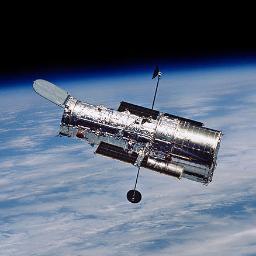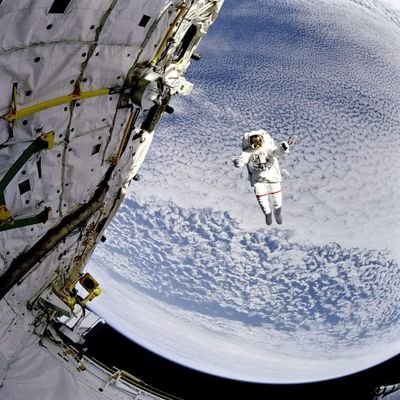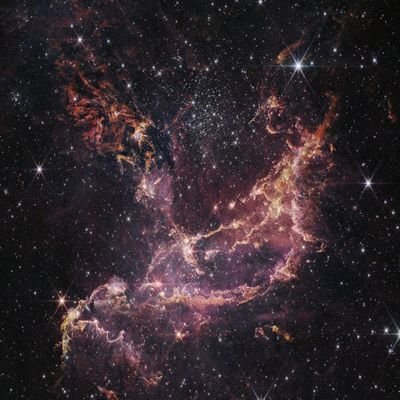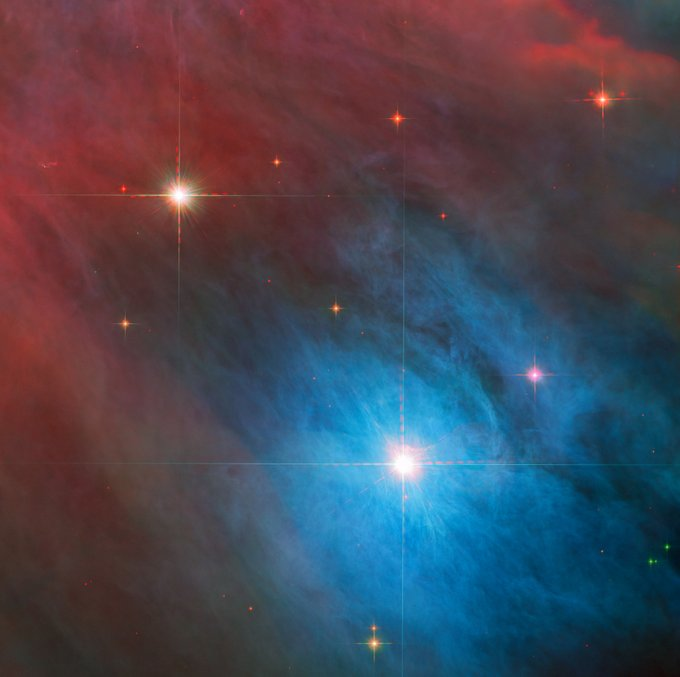#hubblefriday risultati di ricerca
A face-on #HubbleFriday! 🌀 This new Hubble image gives a great view of the spiral galaxy NGC 2835, which lies 35 million light-years away. NGC 2835's arms are dotted with young blue stars, sweeping around an oval-shaped center where older stars reside: go.nasa.gov/4myoG0E

Back for more! This new #HubbleFriday view shows a portion of the Tarantula Nebula, one of Hubble's most frequent targets. Located 160,000 light-years away, it's home to the most massive stars known– some roughly 200 times as massive as our Sun: go.nasa.gov/45I41B6

A massive, spacetime-warping cluster of galaxies swarms this week's new #HubbleFriday view! Called Abell 209, this cluster is a whopping 2.8 billion light-years away. Its mass is powerful enough that it bends light traveling from galaxies behind it: go.nasa.gov/4eN2flt

M82 has a star-powered heart! 🌟 Forming stars 10 times faster than our Milky Way, M82 contains "super" star clusters that each hold hundreds of thousands of stars. Find out more on this #HubbleFriday view: go.nasa.gov/47KTcjo

The cloudy starscape seen in this week's #HubbleFriday view resides within the Large Magellanic Cloud, a nearby dwarf galaxy. This is N11, the galaxy’s second-largest star-forming region: go.nasa.gov/42uVi3h

Pretty in pink 🎀 Despite its relatively small size, the dwarf galaxy NGC 4449 forms stars at a much faster rate than expected. The bright pink patches throughout show star-forming regions! Find out more on this #HubbleFriday view: go.nasa.gov/4e8bHiG
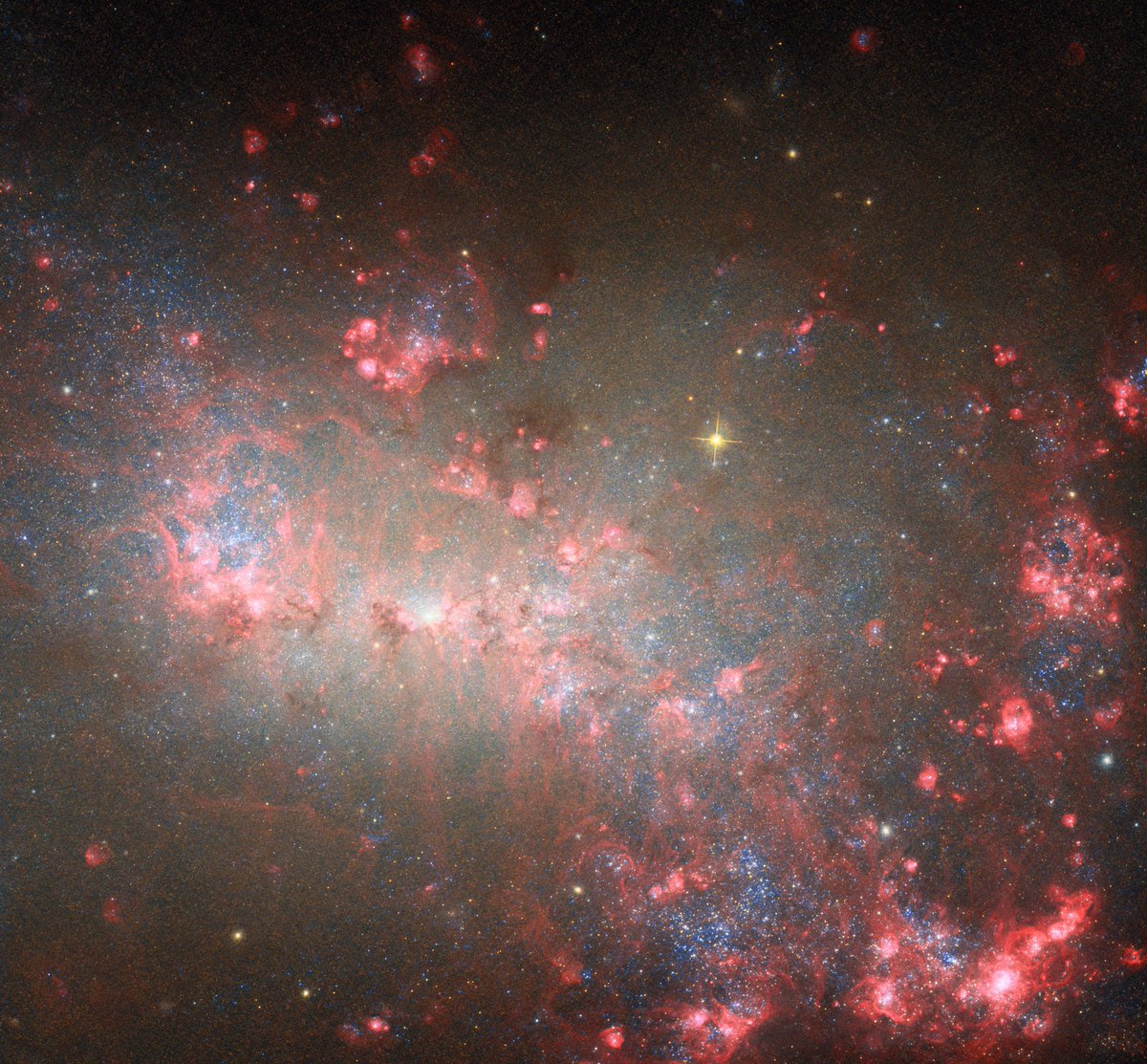
Galaxies galore! While the main focus of this new #HubbleFriday view is the massive spiral galaxy NGC 1309, nearly every other point of light seen here is a whole other galaxy – some shining through less dense regions of NGC 1309 itself: go.nasa.gov/3IXyCBW

Low brightness, high interest 💡 Hubble examined NGC 45, seen in this new #HubbleFriday view. It's classified as a low surface brightness galaxy – a type of galaxy fainter than the night sky itself. Thankfully, Hubble's sensitivity is up to the task: go.nasa.gov/4mKw60z
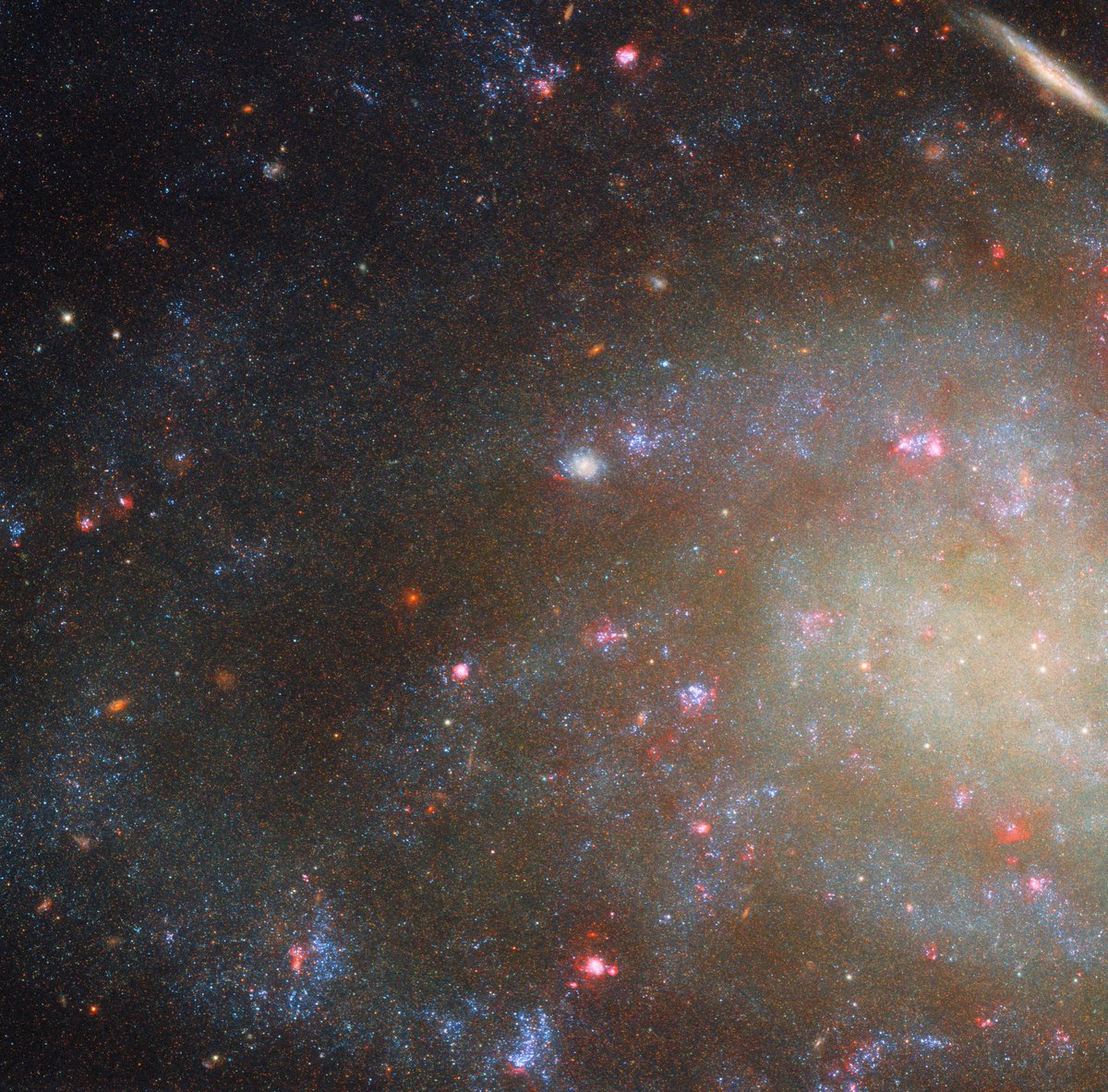
A cosmic weigh-in 💪 Hubble observations, like the ones captured for this new #HubbleFriday view of UGC 11397, will help scientists weigh nearby supermassive black holes, and understand how black holes grew early in the universe’s history: go.nasa.gov/44KIRkv

NGC 2775 is difficult to define. The galaxy in this #HubbleFriday image is home to a smooth center mostly devoid of gas, resembling an elliptical galaxy. But it also has a dusty ring with star clusters, like a spiral galaxy. So what is it? Find out here: go.nasa.gov/4gI7Rhu

Galactic tug-of-war! This #HubbleFriday image shows the spiral galaxy M96. Its asymmetrical appearance might be due to the gravitational pull of nearby galaxies, causing its uneven distribution of gas and dust, along with its slightly skewed spiral arms: go.nasa.gov/4g9wgMP

NGC 7456 is keeping Hubble busy! The galaxy in this new #HubbleFriday view is home to plenty of stellar activity. Astronomers are using Hubble to track NGC 7456's new stars, clouds of hydrogen, and star clusters to learn how the galaxy evolved over time: go.nasa.gov/3JMvVDO

Digging up a galactic time capsule 🕰️ This #HubbleFriday view shows the globular cluster NGC 1786. Because of their stability and long lives, star clusters like these act as cosmic fossils, preserving stars from the early stages of a galaxy’s formation: go.nasa.gov/3TJzDzN

Shining serenely in this new #HubbleFriday view, IC 758 might look calm – but it hides a cataclysmic past. Researchers are using Hubble to gather clues about a previous supernova explosion in this galaxy: go.nasa.gov/43JTlkE

Back for more! This new #HubbleFriday view shows a portion of the Tarantula Nebula, one of Hubble's most frequent targets. Located about 160,000 light-years away, this nebula is home to the most massive stars known– some roughly 200 times as massive as our Sun! Hubble's…
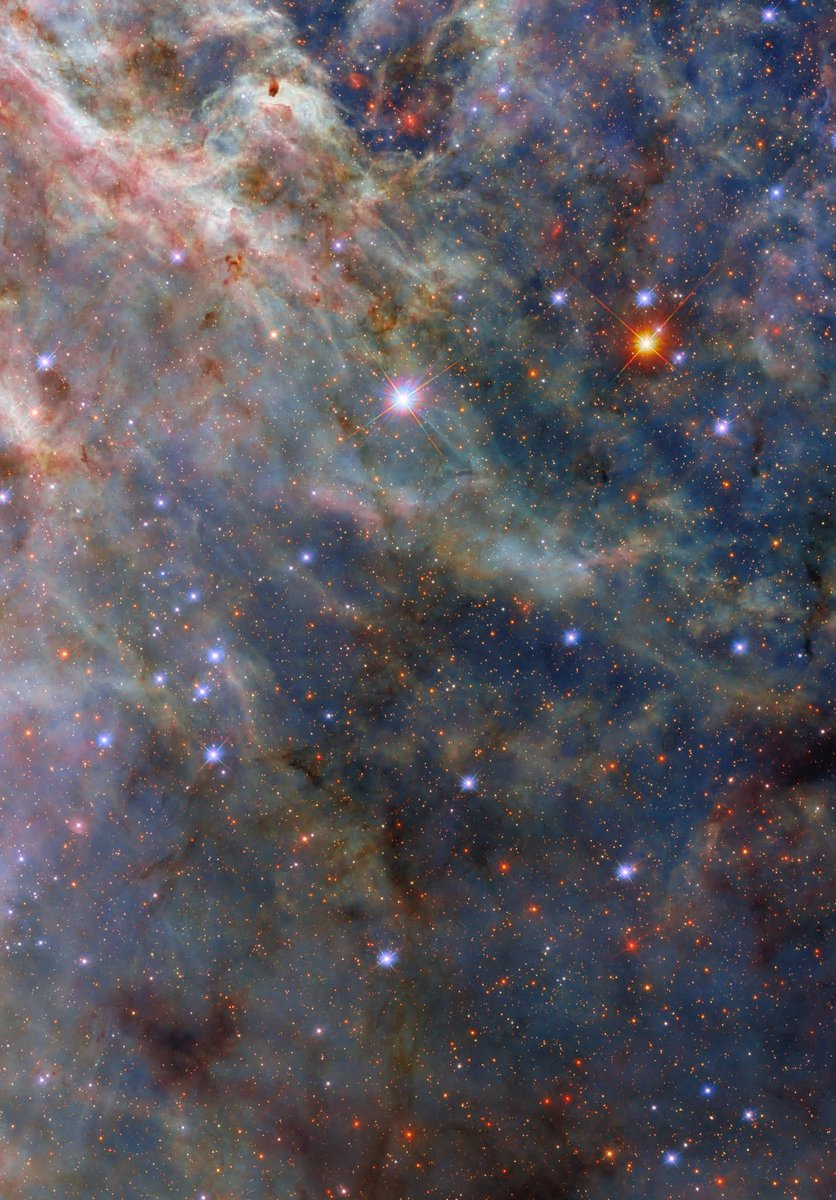
This #HubbleFriday image shows the spiral galaxy M96. Its asymmetrical appearance might be due to the gravitational pull of nearby galaxies, causing its uneven distribution of gas and dust, along with its slightly skewed spiral arms.⬇️
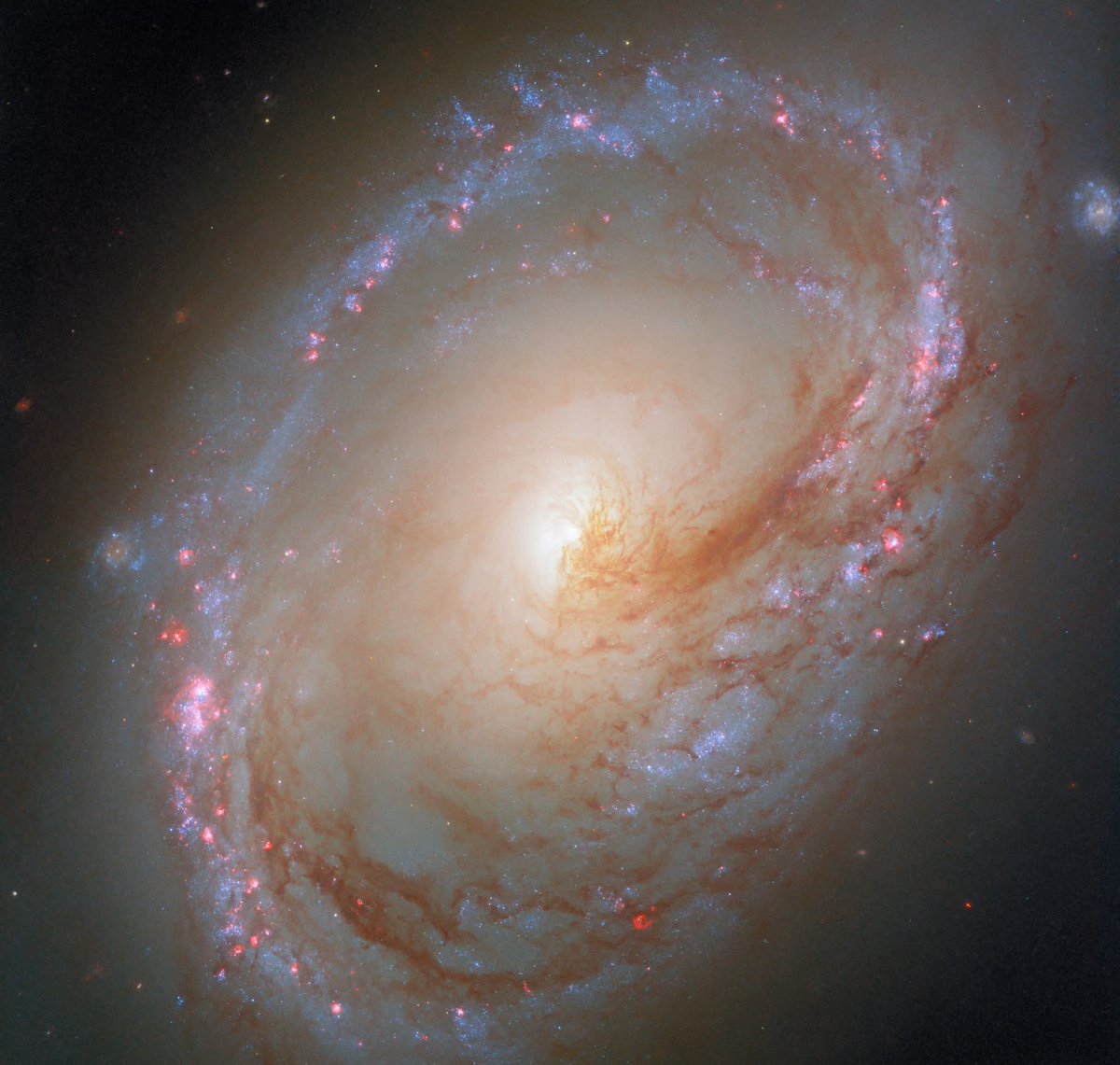
A starry spectacle ✨ This new #HubbleFriday view shows the galaxy NGC 685. Located about 64 million light-years away, it was studied by Hubble for two observing programs, both focused on star formation: go.nasa.gov/4jD1MTo

Look at a distance of 260 million light years! That's the distance to spiral galaxy UGC 678, which shines in this week's #HubbleFriday image.
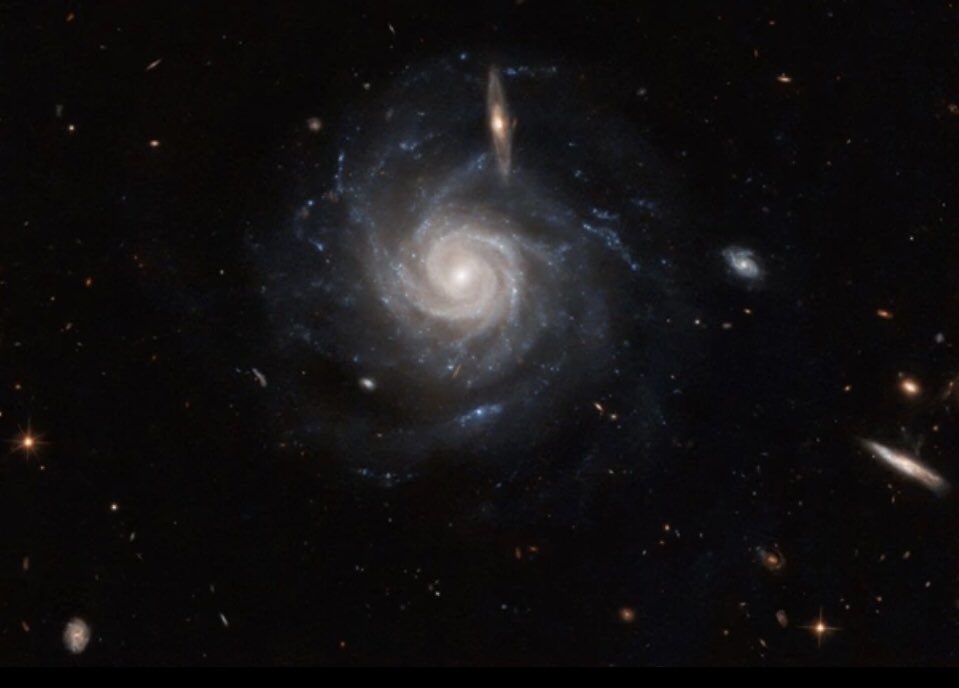
A cosmic cloudscape ☁️ This week's new #HubbleFriday image takes a look into one of our Milky Way's neighbors, the Large Magellanic Cloud. Located 160,000 light-years away, it's the largest of the Milky Way’s many small satellite galaxies: go.nasa.gov/3GShk8b
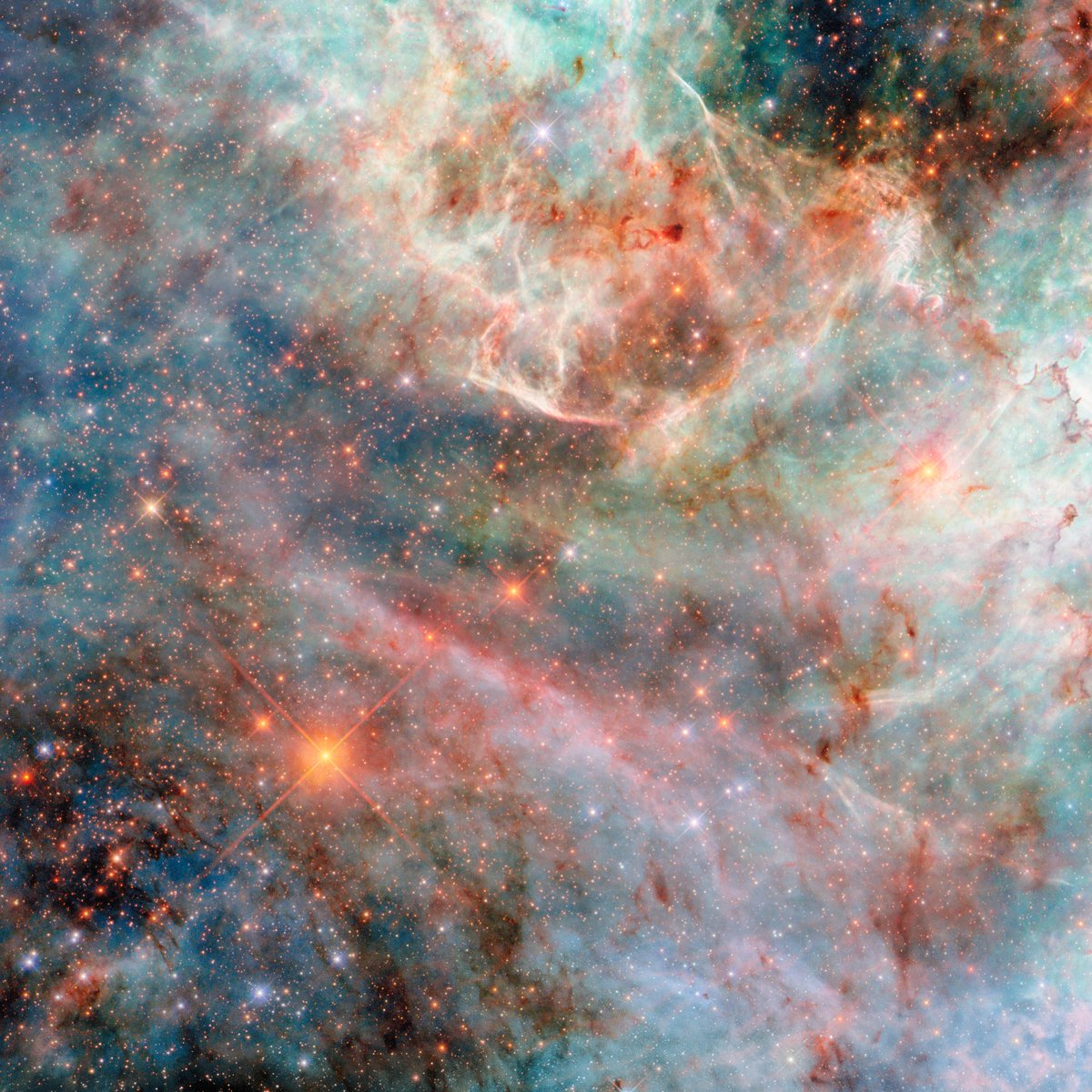
Pretty in pink 🎀 Despite its relatively small size, the dwarf galaxy NGC 4449 forms stars at a much faster rate than expected. The bright pink patches throughout show star-forming regions! Find out more on this #HubbleFriday view: go.nasa.gov/4e8bHiG

A massive, spacetime-warping cluster of galaxies swarms this week's new #HubbleFriday view! Called Abell 209, this cluster is a whopping 2.8 billion light-years away. Its mass is powerful enough that it bends light traveling from galaxies behind it: go.nasa.gov/4eN2flt

Back for more! This new #HubbleFriday view shows a portion of the Tarantula Nebula, one of Hubble's most frequent targets. Located 160,000 light-years away, it's home to the most massive stars known– some roughly 200 times as massive as our Sun: go.nasa.gov/45I41B6

A cosmic weigh-in 💪 Hubble observations, like the ones captured for this new #HubbleFriday view of UGC 11397, will help scientists weigh nearby supermassive black holes, and understand how black holes grew early in the universe’s history: go.nasa.gov/44KIRkv

A face-on #HubbleFriday! 🌀 This new Hubble image gives a great view of the spiral galaxy NGC 2835, which lies 35 million light-years away. NGC 2835's arms are dotted with young blue stars, sweeping around an oval-shaped center where older stars reside: go.nasa.gov/4myoG0E

M82 has a star-powered heart! 🌟 Forming stars 10 times faster than our Milky Way, M82 contains "super" star clusters that each hold hundreds of thousands of stars. Find out more on this #HubbleFriday view: go.nasa.gov/47KTcjo

Shining serenely in this new #HubbleFriday view, IC 758 might look calm – but it hides a cataclysmic past. Researchers are using Hubble to gather clues about a previous supernova explosion in this galaxy: go.nasa.gov/43JTlkE

Galaxies galore! While the main focus of this new #HubbleFriday view is the massive spiral galaxy NGC 1309, nearly every other point of light seen here is a whole other galaxy – some shining through less dense regions of NGC 1309 itself: go.nasa.gov/3IXyCBW

Low brightness, high interest 💡 Hubble examined NGC 45, seen in this new #HubbleFriday view. It's classified as a low surface brightness galaxy – a type of galaxy fainter than the night sky itself. Thankfully, Hubble's sensitivity is up to the task: go.nasa.gov/4mKw60z

The cloudy starscape seen in this week's #HubbleFriday view resides within the Large Magellanic Cloud, a nearby dwarf galaxy. This is N11, the galaxy’s second-largest star-forming region: go.nasa.gov/42uVi3h

NGC 2775 is difficult to define. The galaxy in this #HubbleFriday image is home to a smooth center mostly devoid of gas, resembling an elliptical galaxy. But it also has a dusty ring with star clusters, like a spiral galaxy. So what is it? Find out here: go.nasa.gov/4gI7Rhu

Galactic tug-of-war! This #HubbleFriday image shows the spiral galaxy M96. Its asymmetrical appearance might be due to the gravitational pull of nearby galaxies, causing its uneven distribution of gas and dust, along with its slightly skewed spiral arms: go.nasa.gov/4g9wgMP

Digging up a galactic time capsule 🕰️ This #HubbleFriday view shows the globular cluster NGC 1786. Because of their stability and long lives, star clusters like these act as cosmic fossils, preserving stars from the early stages of a galaxy’s formation: go.nasa.gov/3TJzDzN

NGC 7456 is keeping Hubble busy! The galaxy in this new #HubbleFriday view is home to plenty of stellar activity. Astronomers are using Hubble to track NGC 7456's new stars, clouds of hydrogen, and star clusters to learn how the galaxy evolved over time: go.nasa.gov/3JMvVDO

This #HubbleFriday image shows the spiral galaxy M96. Its asymmetrical appearance might be due to the gravitational pull of nearby galaxies, causing its uneven distribution of gas and dust, along with its slightly skewed spiral arms.⬇️

Happy #HubbleFriday Let’s keep reaching for the stars ✨ #nft #NFTart #NFTs #NFTCommuntiy #nasa #space #nebula

Look at a distance of 260 million light years! That's the distance to spiral galaxy UGC 678, which shines in this week's #HubbleFriday image.

A starry spectacle ✨ This new #HubbleFriday view shows the galaxy NGC 685. Located about 64 million light-years away, it was studied by Hubble for two observing programs, both focused on star formation: go.nasa.gov/4jD1MTo

Something went wrong.
Something went wrong.
United States Trends
- 1. Branch 37K posts
- 2. Chiefs 112K posts
- 3. Red Cross 53.4K posts
- 4. Exceeded 5,832 posts
- 5. Binance DEX 5,129 posts
- 6. Mahomes 34.8K posts
- 7. #njkopw 7,707 posts
- 8. Rod Wave 1,656 posts
- 9. Air Force One 57.5K posts
- 10. #LaGranjaVIP 83K posts
- 11. Eitan Mor 17.1K posts
- 12. #TNABoundForGlory 59.7K posts
- 13. #LoveCabin 1,380 posts
- 14. Ziv Berman 20K posts
- 15. Alon Ohel 17.7K posts
- 16. Tel Aviv 59.2K posts
- 17. Matan Angrest 16K posts
- 18. Omri Miran 16.3K posts
- 19. Bryce Miller 4,607 posts
- 20. Tom Homan 81.4K posts

